Since the US Farm Bill 2018 was passed and industrial hemp became legal, the cannabis industry has expanded. Now, CBD has gone mainstream in the United States with the market expected to reach $23.7 billion by 2023.
Image via Brightfield Group
Non-intoxicating CBD products (like CBD oil) have many takers. Consumers belong to all ages, countries, and even species.
Surprised by the last bit?
I’m not joking. People are feeding CBD to their pets to relieve pain and thunderstorm anxiety.
As consumers learn about the benefits of CBD oils and other CBD items, many entrepreneurs have jumped into the fray with innovative CBD products. It’s a competitive market and many CBD brands, big and small, are fighting to get a piece of the cannabis industry.
How can you beat the competition?
By using a wide array of marketing strategy that differentiates your CBD business from your competitors. A strategy that helps you grab the attention of your target audience and convert them into loyal customers.
Sound good?
Then, read on. This post is a comprehensive CBD digital marketing guide. It walks you through the stages of cannabis marketing so that you can grab a piece of this growing pie for the foreseeable future.
But first, let’s understand CBD and some of the challenges CBD brands and marketers are facing.
Table of Contents
What Is CBD?
Cannabidiol (CBD) is a natural compound found in cannabis plants. Scientists have isolated more than 120 cannabinoids in the plant. One of them is tetrahydrocannabinol (THC), which causes marijuana’s psychoactive effects. According to the National Institute of Drug Abuse, THC activates brain receptors to produce a “high.”
How does CBD differ from THC?
It’s not psychoactive and doesn't cause the “high” associated with marijuana. It is often sold in the form of oil, gels, supplements, vape cartridges, extracts, lip balms, gummies, and more.
The FDA has approved the use of CBD only in treating two severe forms of epilepsy. Recently, they approved a CBD-containing oral solution for the treatment of seizures in children caused by the rare condition, tuberous sclerosis complex (TSC).
Beyond that, many people believe that CBD can alleviate schizophrenia, chronic pain, and sleep disorders. However, no conclusive medical evidence of this has been found.
As more favorable information about the health benefits of CBD has come to light, this ingredient has found its way into many consumer goods, such as CBD oils, coffee, facial scrubs, and sparkling water.
Why Has CBD Become Popular?
The popularity is mainly due to the legalization of cannabinoids for mainstream markets. Other reasons for this popularity include:
- No “high”: As pointed out earlier, CBD doesn't give you a high. With negligible psychoactive effects, it’s an appealing option for people looking to alleviate pain or stress. It has also created a burgeoning market for researchers, farmers, and investors.
- It’s legal: Most US states have legalized the use of CBD for medical or personal use. In most states, consumers can purchase CBD products without a medical card.
- It may be an effective alternative treatment: Many people say they are benefitting from CBD as a treatment option. The National Center for Biotechnology Information reports that CBD can reduce epileptic seizures in children.
- It’s popular among influencers: With CBD showing great business potential, a number of CBD business have collaborated with CBD influencers to promote it online. These influencers help spread awareness about CBD’s health benefits.
Understanding CBD Marketing Challenges
Despite increasing awareness and a more-favorable legal climate, CBD marketers face many advertising restrictions and other challenges, including:
Stringent Laws
The CBD industry has grown largely due to the 2018 Farm Bill. However, it’s not legal in all states, and even in states that permit its use, the law is strict about how you can market CBD products.
The marketing strategy for your CBD product needs to comply with applicable laws and regulations. You must be careful and pay attention when writing marketing copy, posts, or testimonials.
What do these rules entail?
According to the FDA, marketers selling CBD products should follow the guidelines laid out by the Federal Food, Drug, and Cosmetic Act (FD&C Act).
You cannot claim that the products are dietary supplements or medically-proven treatments for any illness, unless backed by reliable and relevant medical advice. The FDA may consider this to be deceptive marketing
Statements about your CBD products and business should be backed by evidence. They should not include exaggerated or unfounded claims.
Payment Issues
Legal questions surrounding cannabinoids place CBD products in a high-risk category. As a result, most payment processors are reluctant to work with companies that market CBD products.
A Saturated Market
As CBD evolves into a consumer market, new challenges have cropped up. Increased demand for CBD products has led to stiff competition among CBD vendors.
This means that you need a solid marketing strategy for your CBD product to outperform your competition.
Begin by choosing a category where you are most likely to succeed. Should your CBD product focus on relieving pain in humans or pets? Or providing other therapeutic relief?
If you find a proper fit, then you can better position your CBD brand.
Consumer Concerns
In a recent survey by Quartz, 38% of Americans said that they don't know the side effects of CBD and 33% are worried about its effects when used with prescription drugs.
Some people worry that regular intake of CBD oil or similar CBD products may make them susceptible to cannabis drug addiction.
The uncertainty around CBD products may raise fears among some potential buyers, and this complicates CBD marketing.
Unclear Target Market
Who are your target customers? Older or younger people? Men or women? According to recent research, US adults between 25 and 35 years of age use CBD oil or similar products more than those in other age groups.
Image via 4A’S
The report also found that men are more likely to use CBD than women.
However, a Gallup study stated that women are more likely to use it for anxiety than men.
This highlights the general confusion about how people use CBD.
The Gallup study showed that among American adults who consume CBD, men are more likely than women (15% vs. 8%) to use CBD products to help them sleep. Among these same adults, 40% use it to relieve pain, 20% for anxiety, and 11% for insomnia.
This means that you cannot target everyone with the same proposition. You have to consider the age, location, and demographics of your target buyers.
You will also have to determine which conditions/symptoms you are targeting with your message. These factors can help CBD businesses create a winning marketing strategy.
Ultimate 2024 CBD Marketing Strategy
Given the competition, you need a marketing strategy that is tried and tested. Here are some winning tactics.
Research Your Consumers and Competitors
Your CBD marketing should begin by determining your target audience. Are they men? Women? People in certain age groups? Understand their needs and expectations, and what kinds of products will fulfill those needs.
Target Audience Research
The National Center for Biotechnology Information (NCBI), in their Cross-Sectional Study of Cannabidiol Users found that nearly 62% of CBD users consumed it to treat a medical condition. The top three conditions for which these people used CBD were anxiety, pain, and depression.
Let’s dissect CBD product preferences.
Synthesio used social listening tools to tune in to social conversations of CBD consumers. They divided CBD products into four product categories: sublingual (CBD oil), inhalation (vape pens), oral (gummies, capsules, chocolate bars), and topical (creams, lotions, masks, shampoos).
Around 68% of conversations were around sublingual products or CBD oils, followed by vape and ingestible products.
Image via Synthesio
Beyond these preferences, consider other factors that might motivate your target consumers to purchase CBD products. For example, what laws apply where they live?
Competitor Research
It is likely there are many brands already selling CBD products in your niche. If so, you can get insights from their CBD marketing strategies.
Find out:
- Who are their customers?
- How effective is their CBD marketing?
- What are their strengths and weaknesses?
- What is their selling point?
Answers to these questions will help you improve your CBD marketing strategy.
Create a Unique Value Proposition (UVP)
Why should the customer buy from you and not another company? An appealing UVP is crucial for your CBD marketing strategy.
It’s the first thing most prospective consumers see when evaluating brands. It sets you apart from the competition.
How can you come up with a UVP?
Create it with all your brand’s benefits in mind. Consider the consumer's pain points and how your brand can solve them. When you connect this value to the consumer's challenges, then you get a clear proposition.
A good UVP should be:
- Unique
- Concise
- Believable
- Easy to understand
- Meaningful (why should the target audience care about it?)
It should also explain the types of pain your product will help alleviate and why the consumer should choose your CBD brand.
A clear value proposition makes it easier to define your marketing strategy, create quality content, and communicate with consumers.
You can build messaging that reinforces your brand and UVP, whether it’s in social media posts, email newsletters, or blog posts.
When crafting a UVP, consider these points:
- Are your manufacturing/sourcing processes a cut above the rest?
- Do you use proprietary technology when farming the product or preparing the soil?
- Is your customer service better than that of others?
There is always something unique and compelling that can differentiate you from the rest. You just need to look for it.
Whatever you claim as your UVP, make sure you can provide reliable evidence to back it up. For example, if you say your CBD oil reduces stress, have customer testimonials.
It’s also important to keep testing your UVP. Check what language performs better with your target audience. Set up ads with different sets of keywords, then compare the click-through rates on search engines.
Experiment with email subject lines and website banners. This is called A/B testing or split testing. Rigorous A/B testing is the best way to identify the UVP that has the best potential.
Build an Engaging Website
Your CBD brand’s online presence starts with an engaging website.
The content, visuals, and offers should speak to your target audience. Make sure that you remember that CBD is fairly new, and most people have questions about usage, benefits, and side effects.
Pro tips:
Have an “FAQ” page that answers common questions about CBD. Provide additional resources such as blog posts that discuss CBD’s usage and benefits.
Have “Contact Us” information handy so that consumers can reach out to you and clear their doubts.
It’s a good idea to include compelling product reviews on your homepage.
When designing messages, consider the consumers' pain points. Think from their perspective and write content that is likely to engage them.
If you personalize your customers’ on-site experience, your marketing strategy can do wonders.
Anything else?
Remember to provide clear product descriptions. The “About Us” page should make it easy to learn about your team, your CBD brand, and what you do.
Write in a friendly, conversational, jargon-free style.
To answer customer queries, you can provide 24/7 support in the form of chatbots and live customer service.
Your website should also have a great design. Use content marketing to build consumer trust on your CBD business. Content titles and articles should entice visitors to read more. Visuals should be clear and attractive.
Leverage content syndication on reputable websites in your niche. This will help you reach a wider audience.
If you lack the skills and resources to create a great website, one of the best workarounds is using a website builder. Without any coding or designing skills, you can use these platforms to build robust and optimized websites.
Have an ecommerce functionality so that consumers who don’t want to visit a brick-and-mortar store can buy directly from your website. Make it easy to shop on the website and have products delivered to their doorstep.
Social Media CBD Marketing
Most online platforms don't allow the advertising of CBD, but you can still maintain a social media presence. Have an account on Facebook, Twitter, Instagram, and other platforms.
Any catch?
Yes, you need to color within the lines of laws and the platform’s regulations. Violations can lead to a page ban, which you certainly want to avoid.
Social media platforms are still testing and evolving their advertising policies regarding CBD. Facebook has relaxed their CBD advertising policies.
Now, you can advertise topical hemp, with CTAs linked to landing pages featuring topical CBD and hemp products. But the ad itself shouldn’t carry images of these products.
Google, on the other hand, includes CBD in their list of unauthorized pharmaceuticals and supplements. As of now, they simply don’t allow CBD brands to run paid ads. Don’t fall for agencies that use black-hat techniques to circumvent Google's ad approval process.
To stay on the safe side, try display advertising on platforms outside of Google’s display network, such as FieldTest. They have struck deals with premium publishers with a broad reach. Through these platforms, you can display CBD product catalogs in your ads.
Avoid liability.
It’s a good idea to seek legal advice before advertising CBD products. Your lawyer should help ensure that you are complying with applicable federal laws and the CBD policies of advertising platforms, which are constantly being updated.
Leverage Email Marketing
Your CBD marketing strategy should include email marketing.
Why?
According to studies, 95 of consumers check their emails daily. Of those, 46% check their emails two to three times a day.
Image via Data & Marketing Association
Apart from that, email marketing has an ROI of $42 for every $1 spent. Email marketing is, therefore, a great way to gain leads and convert them into loyal customers.
But how should you handle email marketing for your CBD products?
First, look for a good email marketing platform.
Since CBD has legal issues in some states, talk to your email service provider. Find out if you can use their service to send promotional messages about CBD products.
It’s important to get answers in writing to avoid the risk of suspension. If your account gets suspended, you lose your entire email subscriber list.
Once you get the green light, start building your list.
Offer lead magnets on your website. These are incentives that you can exchange for a visitor’s contact information.
Typically this is downloadable digital content, such as PDFs, ebooks, whitepapers, or videos. Create unique, helpful content that provides value to consumers.
What’s next?
Once you have contact information, you can nurture site visitors into paying customers. If your lead magnets were valuable, consumers will consider you an authority, which makes them easier to convert at this stage.
Satisfied subscribers may also share the information with friends, who, in turn, may become your customers too.
Here’s how you can nurture casual contacts into paying customers and loyal advocates:
Once you have an email list, create automated drip campaigns. These campaigns send messages to leads based on actions they take on your website, ultimately moving them through the sales funnel.
Image via Pardot
Drip campaigns are essential to your marketing strategy. They help you provide timely information, such as sales and deals, which help you convert and nurture contacts more effectively.
The best part?
You don’t need to spend time crafting new emails for each contact. You can pre-load emails into your email marketing platform, and configure them to be sent automatically on certain event triggers.
For example:
If a potential customer subscribes to your blog newsletter, the software immediately sends a personalized welcome email. Later, subscribers receive an email recommending blog posts that may be of interest.
If they visit your landing page and wishlist/cart any of your products, you can send them an email with deals on those products.
70% of millennials are okay with brands tracking their shopping and browsing behavior. They prefer when brands use this information to provide relevant communication. However, 70% of them are frustrated when brands send irrelevant emails.
Image via SmarterHQ
Here are more examples.
- Engagement emails: Keep your customers informed with engaging content to grow your relationships with them.
- Educational emails: Offer authoritative content related to your products. Include research-backed whitepapers, maybe comparing CBD with other cannabis products. They help build customer trust in brands.
- Abandoned cart emails: Send these if a person adds your products to their cart but leaves without making a purchase. This can nudge lost customers down the sales funnel.
- Re-engagement emails: Direct this to customers who purchase sporadically. Drive them to re-engage with your CBD brand by reminding them about your UVP and past interactions with them. Sweeten the deal by offering enticing offers.
- Event emails: Use these emails to inform consumers about branded events. In this way, you can get your customers to attend your events and deepen the relationship with them. Or you can at least get them to engage with your event pages on social media or websites.
- Cross-sell and up-sell emails: Improve your CBD marketing by leveraging cross-selling and upselling opportunities. When customers purchase a certain hemp product, email them offers for complementary products or upgrades.
- Recommendations: Send recommendations based on customers’ past purchases and browsing history.
Leverage SEO
Effective CBD marketing also depends on Search Engine Optimization (SEO), which can help drive organic traffic from search engines to your site. If your pages are optimized for Google searches, potential customers can find you more easily.
Ranking on search engine results pages (SERPs) is a sign of authority for brands. It builds customer confidence and gets more clicks.
But how do you rank on the SERPs?
Start by conducting an SEO audit to find out if your current SEO efforts are working or need improvement.
Find out:
- If your keywords are correct
- If your content is helping you rank for specific keywords
- Whether your site loads fast and how that is affecting your search engine rankings
- Are your meta-tags used correctly?
- Is your XML sitemap updated?
- Do you have backlinks from authoritative sites (off-page SEO)?
- Have you cross-linked related content on your site?
- How are your competitors handling their SEO?
Once you’ve audited your website for SEO, make the necessary improvements.
Anything else?
Ride the trends in your niche. Publish informative and trending content on your blog. Use high-potential keyword phrases in your content, tags, and titles. Optimize file names and alt-tags of images. Include lots of visuals since they get maximum shares.
You can also use local SEO to capture local customers.
How?
Start by listing your business in local directories like Google My Business (GMB) and Bing Places. This can help drive people to your local shop or online store.
Since many people begin searching for brands/products on Google, a great GMB listing can help attract engaged traffic that converts faster.
In addition, consider the use of video for your SEO strategy.
Wyzowl found that 95% of consumers watch explainer videos to learn about products. 81% have bought products after watching a brand video, while 83% share videos they like with their friends. 72% of consumers would rather watch videos than read text when learning about a product.
Explainer videos show how your CBD products can be used. You can also produce video testimonials or influencer reviews. Product hacks and expert interviews help foster customer trust.
You can create a YouTube channel for your videos or post them on your website to keep customers engaged.
Use Affiliate Marketing to Reach CBD Buyers
A CBD marketing strategy that includes influencer marketing means more visibility for your products and increased conversions.
Why?
Influencers build your brand by providing personal and authentic public reviews. They also provide your brand with fresh content and backlinks to improve your search engine rankings.
Not only that, but influencers also have a direct impact on the buying decisions of many consumers.
Don’t believe me?
Check out these influencer marketing statistics:
70% of millennials consider their influencers’ recommendations when making purchase decisions. A number of people discover new products through influencers. Plus, people tend to be loyal to brands that are promoted by relevant influencers.
This means your CBD marketing can do wonders if you partner with the right influencers. Influencers can help you earn new customers as well as retain existing ones.
Of all the platforms that influencers leverage to promote brands, Facebook gets maximum returns and Twitter gets the least. You can use these insights to build a more precise CBD marketing strategy.
Leveraging influencers in your CBD marketing can help you organically promote your CBD products.
What type of influencers should you partner with?
To find the right influencers for your business, don’t allow yourself to be swayed by a larger number of followers. Followers can be faked or bought. As it is, nano- and micro-influencers drive the most engagement.
Image via Social Publi
Once you’ve found your ideal influencer(s), think of innovative ways to work with them for your CBD brand’s benefit.
As you know, CBD has been under debate for its association with marijuana. If your influencers are experts in substance abuse or have a medical background, they can try to remove these misconceptions about CBD.
If it’s hard to find such influencers, you can ask your loyal customers (with a decent social media following) to subtly vouch for your CBD brand/products.
To make the deal a win-win for everyone, you can remunerate your influencers in cash or kind. Then, they become your affiliates.
If affiliate marketing sounds good to you, opt for a formal affiliate partner program.
In the affiliate marketing model, you’ll pay affiliates based on their performance. Affiliates have to generate traffic to your landing page and conversions to get compensation.
Your affiliate marketing strategy will involve having people promote your products on their site or social media platform. Once a consumer purchases the products, you pay the affiliate an agreed-upon commission for the sale.
These affiliate marketing tactics for CBD will multiply your revenue and reach.
Measure Your CBD Marketing Results
Use web analytics tools to measure your CBD marketing results. You’ll understand whether you are investing your money, resources, and time well.
How?
These tools help you analyze the quality and quantity of site traffic. If you notice a spike in traffic volumes after implementing the CBD marketing strategies, that is good news. It means your tactics are working.
After that, you can drill down into the data and identify high-potential target customers. These people may visit your site regularly or make frequent purchases or downloads.
Then, you can put concerted efforts into nurturing these customers and garnering repeat sales. However, if your analytics show less-than-desired results, your CBD marketing efforts may need tweaking.
Keep in mind that the metrics you measure will depend on your CBD marketing goals. They may include engagement rates, ROI, conversion rates, bounce rates, time on page, etc.
FAQ
Q1. Who is the target market for CBD?
A. CBD users by age and percentage are:
- 18-29 year olds – 20% of total CBD users
- 30-49 year olds – 16%
- 50-64 year olds – 11%
- 65 years and above – 8%
Q2. Can you advertise CBD?
A. The stand of social media platforms regarding CBD advertising is variable.
Facebook – They allow ads for ingestible topical CBD and hemp, but the ads should not feature these products.
Instagram – They don’t allow advertising CBD in any form or format.
TikTok – Their Community Standards prohibit advertisements for CBD products and paraphernalia.
Q3. Where can you advertise CBD?
A. Most social sites (Snapchat, Instagram, Google, and TikTok) prohibit CBD advertising. Facebook has recently relaxed their guidelines regarding CBD advertising.
On the platform, you can run ads for topical hemp and ingestible hemp, provided these products are not explicitly featured in the ads.
For other platforms, you have to rely on other marketing tactics like SEO and influencer marketing to create brand awareness about your CBD products.
Q4. Can you market CBD on Instagram?
A. Instagram prohits advertising CBD products in any form. However, you can leverage influencer marketing on the platform to raise brand awareness about your CBD products.
Q5. How can I legally market CBD?
A. Although CBD advertising remains a gray area on social media platforms and Google, you can implement other legally-compliant strategies to market your CBD products. They include:
- SEO
- Affiliate marketing
- Content marketing through blog posts and research-backed whitepapers
- Influencer marketing
- Email marketing
- Trade shows and exhibitions
Q6. What are the top 5 CBD companies?
A. The top 5 CBD companies in the US by market share are:
- CW Hemp
- Green Roads World
- CV Sciences
- Balanced Health Botanicals
- Medterra
Q7. Can you sell CBD on Google?
A. No, Google prohibits the selling of CBD products in any form. CBD is covered in Google’s list of unapproved pharmaceuticals and supplements for advertising purposes. However, you can use organic marketing tactics like SEO to boost your visibility in Google search engine results.
Q8. How big is the CBD market?
A. In 2019, the CBD market was valued at USD 395.2 million, according to a GMR report. The market is expected to grow at a rate of 30.4% until 2027.
Q9. Can CBD be marketed as a stress relief?
A. At present, the FDA has approved only one CBD product. It is a prescription drug to treat two severe forms of epilepsy. Apart from that, marketing CBD for any other purpose is legally prohibited.
Q10. Can I market CBD as organic?
A. Although CBD is derived from the hemp plant, advertising CBD oil as “organic” is misrepresenting facts. As things stand now, CBD products are not approved by the USDA and till that happens, you can’t call market CBD openly, much less call it “organic.”
Are You Ready to Unleash This CBD Marketing Strategy?
The CBD industry is expected to continue growing. More players will join the fray, making the competition and conversion rates stiffer.
Having a robust marketing strategy for your CBD business can give your business longevity and scalability. You can evolve as the business landscape changes.
Do you think you are ready to implement your CBD marketing strategy? Or do you need more assistance? What marketing tactics are you planning to use? Share with us in the comment section below.
Disclaimer: This guide does not constitute legal or medical advice.

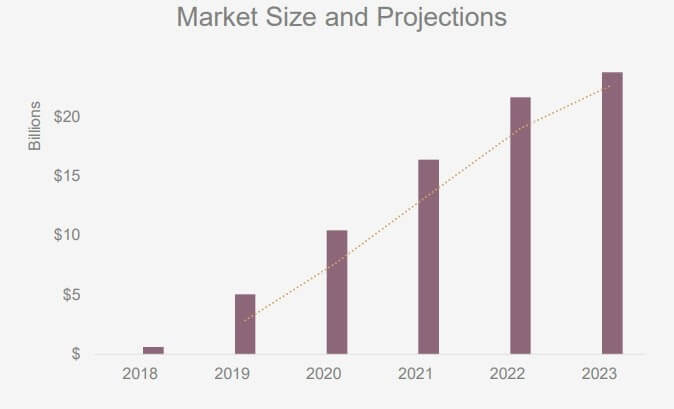
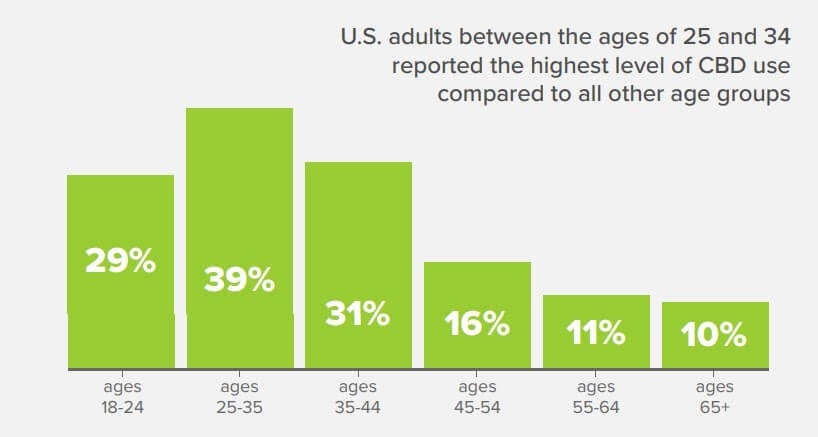
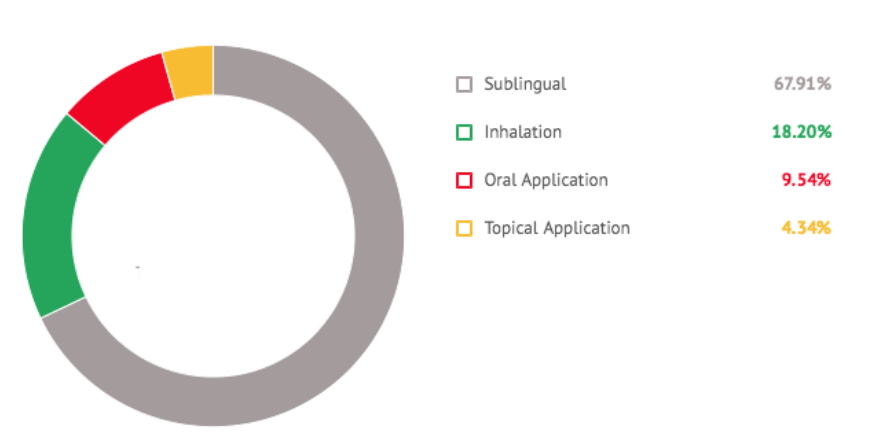
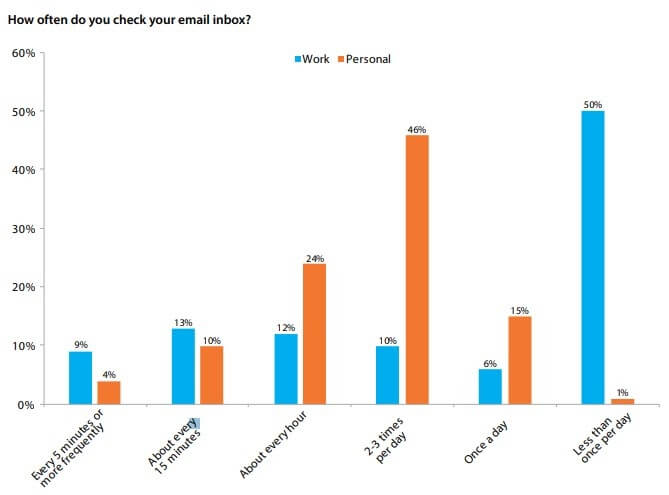
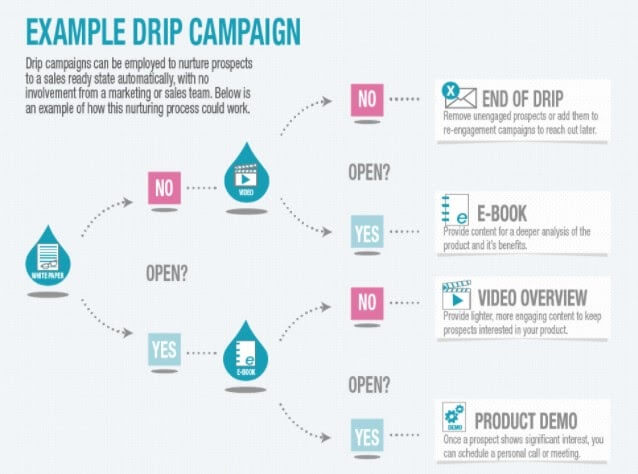
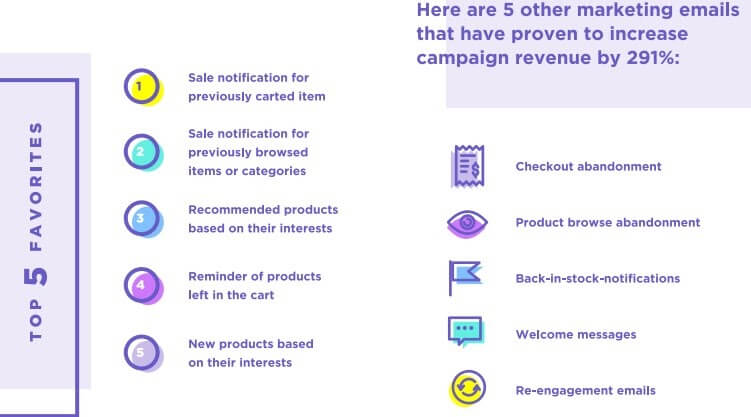
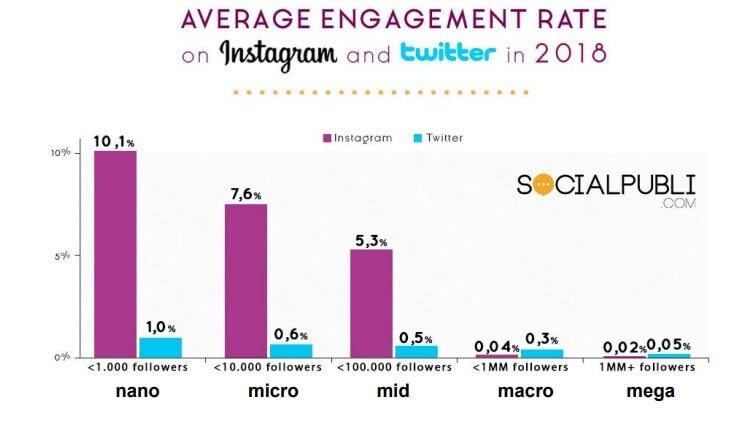
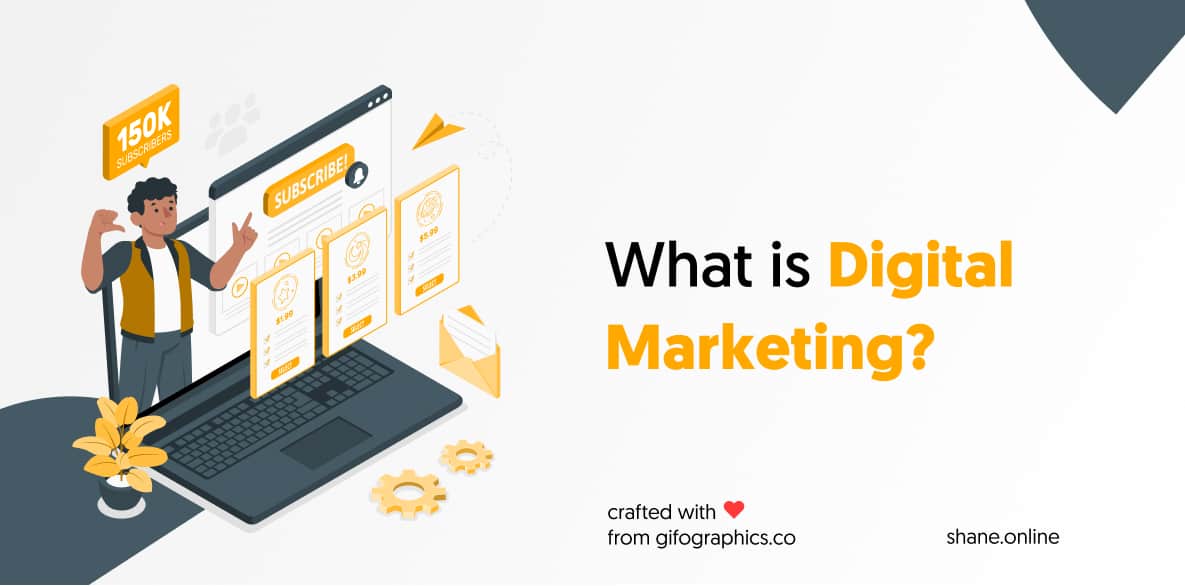
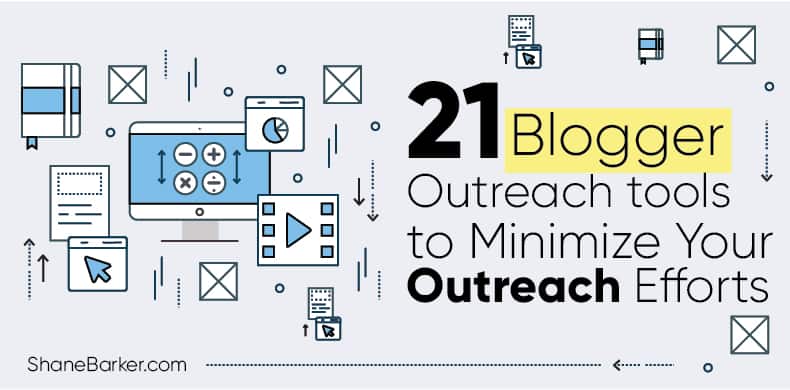
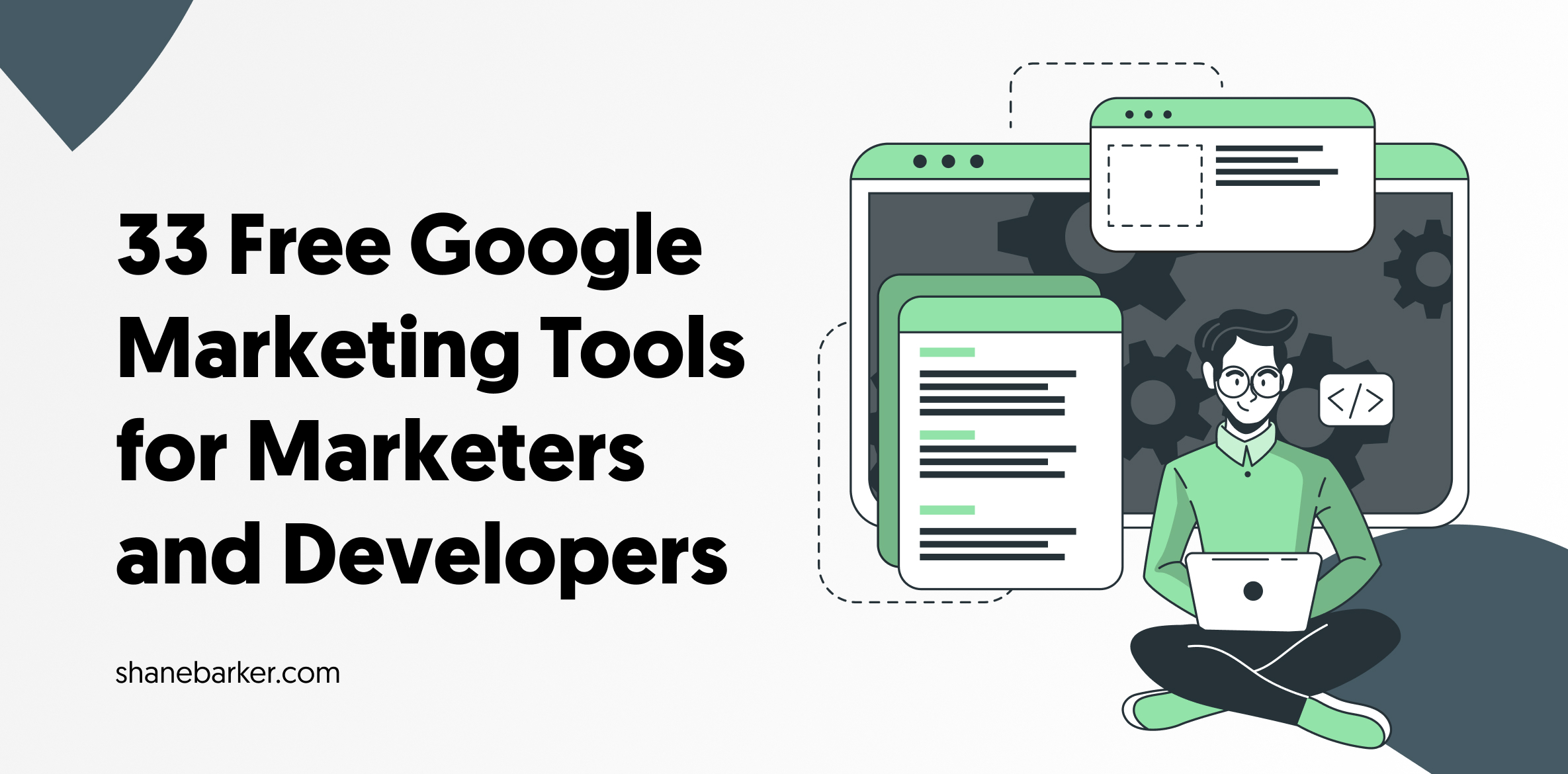
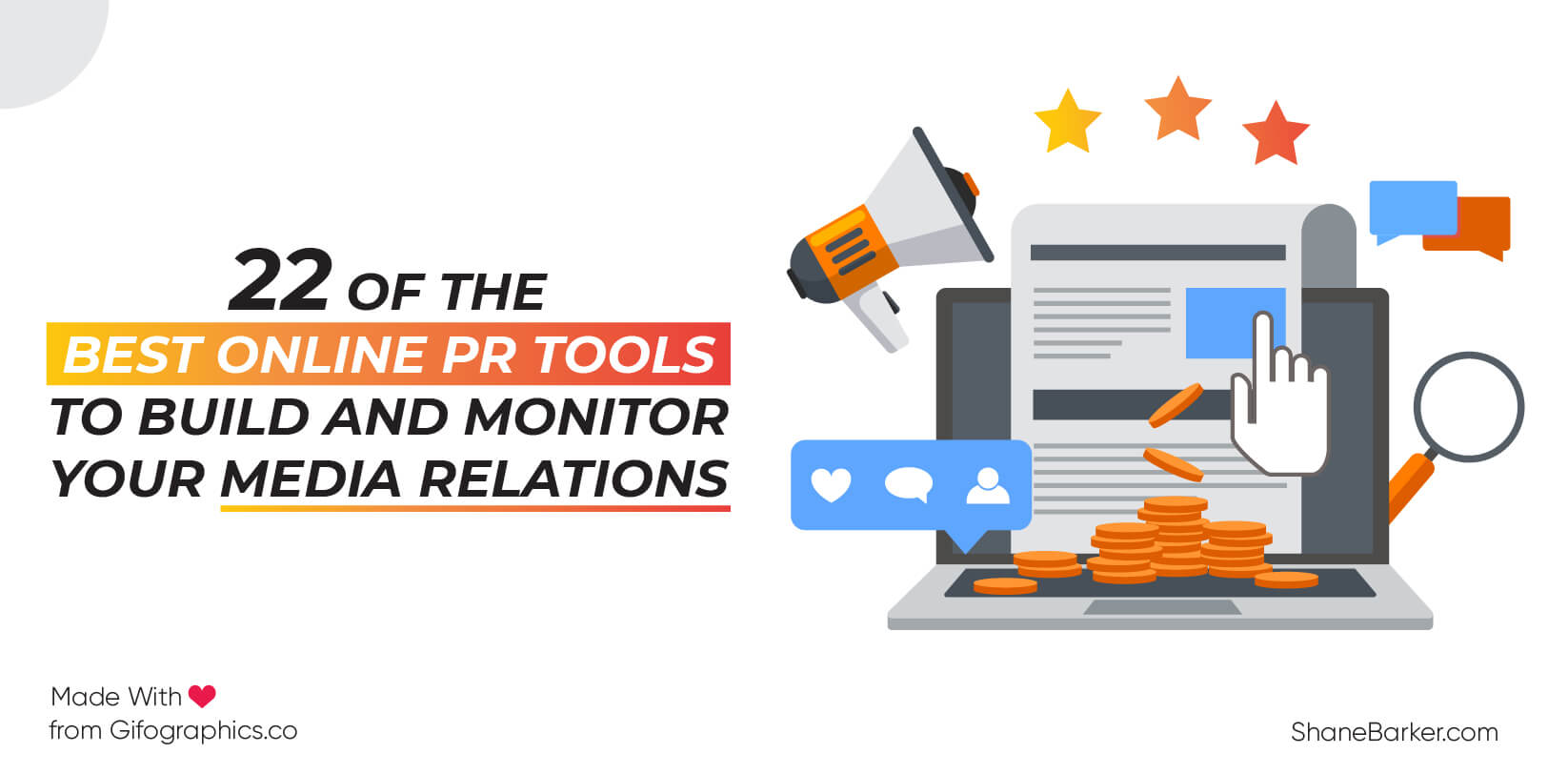
![digital marketing for startups: the strategies to use in [year] 19 best digital marketing strategies for startups](https://shanebarker.com/wp-content/uploads/2021/09/best-digital-marketing-strategies-for-startups.png)

Thanks for sharing this useful information!
Hi Nishant, I’m glad you liked my post about CBD Marketing.
Very informative information. Thanks!
Hi Tommie, thank you! 🙂